|
Fokker E.III
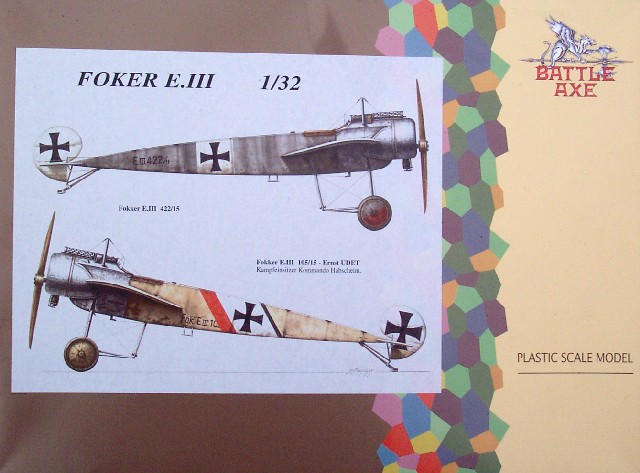
Battle Axe 1/32
S
u m m a r y
|
| Catalogue Number: |
Battle Axe Fokker E.III
Kit #32BA02 |
| Scale: |
1/32 |
| Contents and Media: |
See text below |
| Price: |
USD$79.97 from Squadron.com
|
| Review Type: |
FirstLook |
| Advantages: |
Well-moulded parts, good
outline, thin decals. |
| Disadvantages: |
Correct span wing but 1
rib short. Later type machine gun. |
| Recommendation: |
Recommended |
Reviewed by Robert Baumgartner

Battle
Axe's 1/32 scale Fokker E.III
is available online from Squadron.com
This is a good subject choice from Battle Axe and is
the second offering in this series, following on from the Fokker D.VII.
This type of aircraft lends itself to large scales where the modeler has
plenty of opportunity to go berserk and add extra detail.
Only one sprue is used for the plastic parts but it is huge.
All parts were fully moulded and despite the large size of some of the
items, there was no warping of any kind.
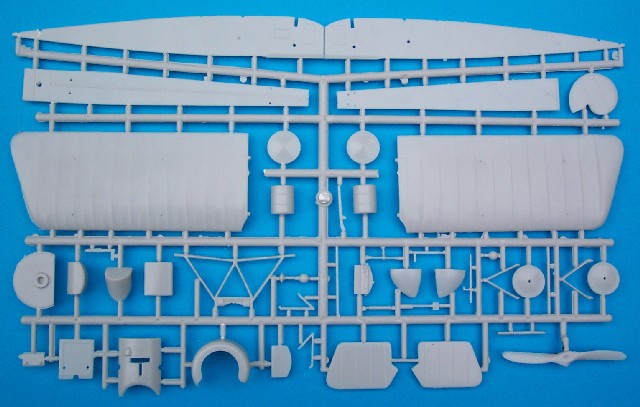
Measurements were taken off Ian Stair’s plans in the Albatros Datafile on
the Fokker E.III and used to compare the relative accuracy of the parts.
The components matched up very well although in one respect the model
scales out a bit larger than stated. This is the wing cord, which is about
4mm too long.
The wings, although of the correct length, are 1 rib short in detail. It
is almost as if Battle Axe copied Eduard here as the latter did the same
with their initial 1/48th scale kit.
The previously mentioned plans, photos in the Datafile and reference to an
actual preserved example (210/16) in London’s Science Museum confirm this
detail.
If you wish to correct this, it’s not too difficult to sand the rib detail
off and replace it with decal strip, stretch plastic strip or simply thin
tape. This would also allow the opportunity to shorten the cord and thin
the resulting trailing edges.
While you’re at it, it would also be good idea to remove the lower “rib”
on the rudder as well.
The fuselage is made up of four sides and comprises of structural detail
on the inner surfaces where appropriate. For those that like to scratch
build the interior themselves, the moulded on tubular frame and wire
bracing will provide a useful guide.
There will be visible ejector pins to clean up but due to their small size
and location, this is easily done.
All of the other plastic parts are standard fair. The cockpit area
consists of the front fuel/oil tank, the rear fuel tank, ammo containers,
pressure pump, carburetor, seat, seat bears, rudder bar and control
column.
The resin machine gun supplied by Battle Axe is a lovely piece of casting.
Unfortunately it represents the LMG 08/15 so it must be modified to
reflect the IMG 08 found on the E.III. The cut away portions of the breech
case must be filled as well as the removal of the anti-flash cone.
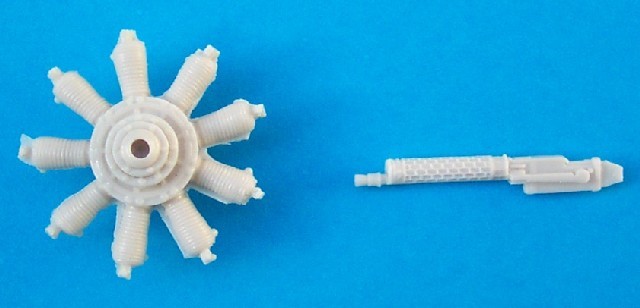
This mistake could have arisen from the Stair plans, which also show the
LMG 08/15 (as does the Datafile profiles).
Resin is also used for the 100hp Oberursel U.I engine to which photo
etched push rods are added. In this scale, it would be wise to use wire
for a more 3 dimensional look.
A nice little photo-etched metal fret is provided which gives the
necessary seatbelt buckles, propeller boss and machine gun jacket. Also
supplied are control horns, instrument faces, gate sight, throttle, pilot
steps, ammunition, pulley, cartridge chute and map case.
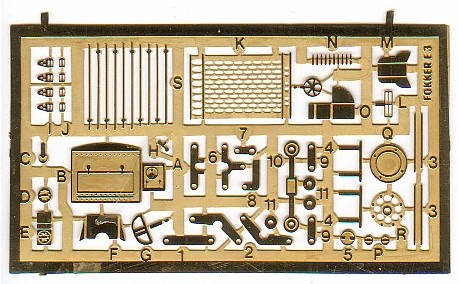
The large decal sheet has nice thin carrier film and supplies markings for
two aircraft. Being all in one colour, registration is not a problem.
Apart from the crosses and serial numbers, handling and trestle markings
are also given.
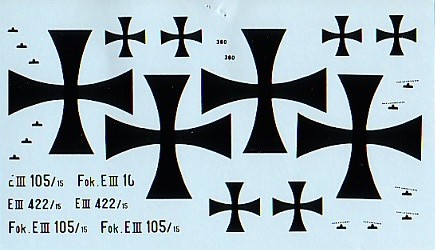
Unfortunately these latter two items are supplied as two lots of “Hier
unterstuten” and one lot of “Hier anfassen”. It should be the other way
round.
Options are for:
a) Fokker
E.III 422/15.
It’s good to see the artist go out on a limb here and use a colour other
than the traditional “straw” to depict the fabric covering. There are
photos to suggest a different finish on some aircraft and the artist’s
impression is as good a guess as any.
b) Fokker
E.III 105/15
flown by Ernst Udet of Kampfeinsitzer Kommando Habsheim
(Kek) in March 1916.
The photo in the Datafile that depicts this aircraft shows it to have the
alternate square cowl cheeks that were fitted to some E.IIIs.
Unfortunately the kit does not provide these.
So unless Battle Axe has seen a different photo…
With the popularity of the Fokker E.III in the
smaller scales, this kit is sure to find a ready market.
Although not perfect, the basics are there to produce a very nice model.
For those that want the utmost in accuracy, the corrections are not beyond
the skills of the average modeler.
Recommended.
Thanks to
Squadron.com for the review
sample.
Review and Images Copyright © 2003 by
Robert Baumgartner
Page Created 23 September, 2003
Last updated 22 September, 2003
Back to HyperScale Main Page
Back to Reviews Page
|
Home | What's
New | Features
| Gallery |
Reviews | Reference
| Forum
| Search